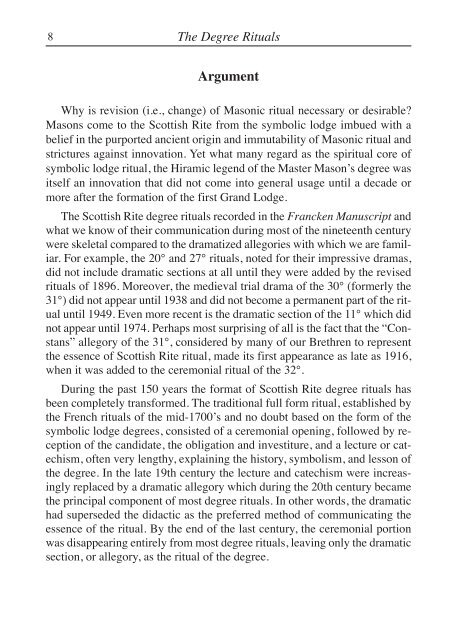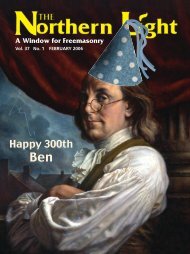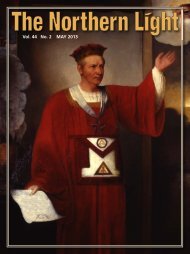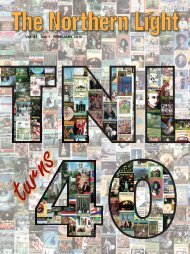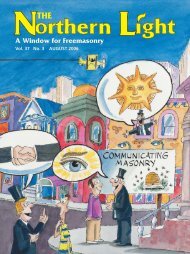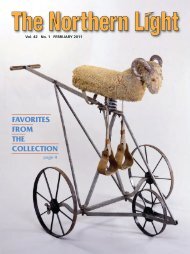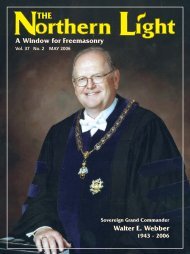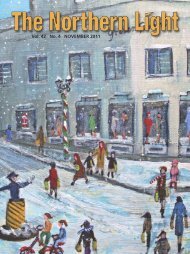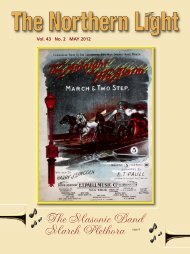The Degree Rituals The Supreme Council, 33 ... - Scottish Rite, NMJ
The Degree Rituals The Supreme Council, 33 ... - Scottish Rite, NMJ
The Degree Rituals The Supreme Council, 33 ... - Scottish Rite, NMJ
You also want an ePaper? Increase the reach of your titles
YUMPU automatically turns print PDFs into web optimized ePapers that Google loves.
8 <strong>The</strong> <strong>Degree</strong> <strong>Rituals</strong><br />
Argument<br />
Why is revision (i.e., change) of Masonic ritual necessary or desirable?<br />
Masons come to the <strong>Scottish</strong> <strong>Rite</strong> from the symbolic lodge imbued with a<br />
belief in the purported ancient origin and immutability of Masonic ritual and<br />
strictures against innovation. Yet what many regard as the spiritual core of<br />
symbolic lodge ritual, the Hiramic legend of the Master Mason’s degree was<br />
itself an innovation that did not come into general usage until a decade or<br />
more after the formation of the first Grand Lodge.<br />
<strong>The</strong> <strong>Scottish</strong> <strong>Rite</strong> degree rituals recorded in the Francken Manuscript and<br />
what we know of their communication during most of the nineteenth century<br />
were skeletal compared to the dramatized allegories with which we are familiar.<br />
For example, the 20° and 27° rituals, noted for their impressive dramas,<br />
did not include dramatic sections at all until they were added by the revised<br />
rituals of 1896. Moreover, the medieval trial drama of the 30° (formerly the<br />
31°) did not appear until 1938 and did not become a permanent part of the ritual<br />
until 1949. Even more recent is the dramatic section of the 11° which did<br />
not appear until 1974. Perhaps most surprising of all is the fact that the “Constans”<br />
allegory of the 31°, considered by many of our Brethren to represent<br />
the essence of <strong>Scottish</strong> <strong>Rite</strong> ritual, made its first appearance as late as 1916,<br />
when it was added to the ceremonial ritual of the 32°.<br />
During the past 150 years the format of <strong>Scottish</strong> <strong>Rite</strong> degree rituals has<br />
been completely transformed. <strong>The</strong> traditional full form ritual, established by<br />
the French rituals of the mid-1700’s and no doubt based on the form of the<br />
symbolic lodge degrees, consisted of a ceremonial opening, followed by reception<br />
of the candidate, the obligation and investiture, and a lecture or catechism,<br />
often very lengthy, explaining the history, symbolism, and lesson of<br />
the degree. In the late 19th century the lecture and catechism were increasingly<br />
replaced by a dramatic allegory which during the 20th century became<br />
the principal component of most degree rituals. In other words, the dramatic<br />
had superseded the didactic as the preferred method of communicating the<br />
essence of the ritual. By the end of the last century, the ceremonial portion<br />
was disappearing entirely from most degree rituals, leaving only the dramatic<br />
section, or allegory, as the ritual of the degree.


